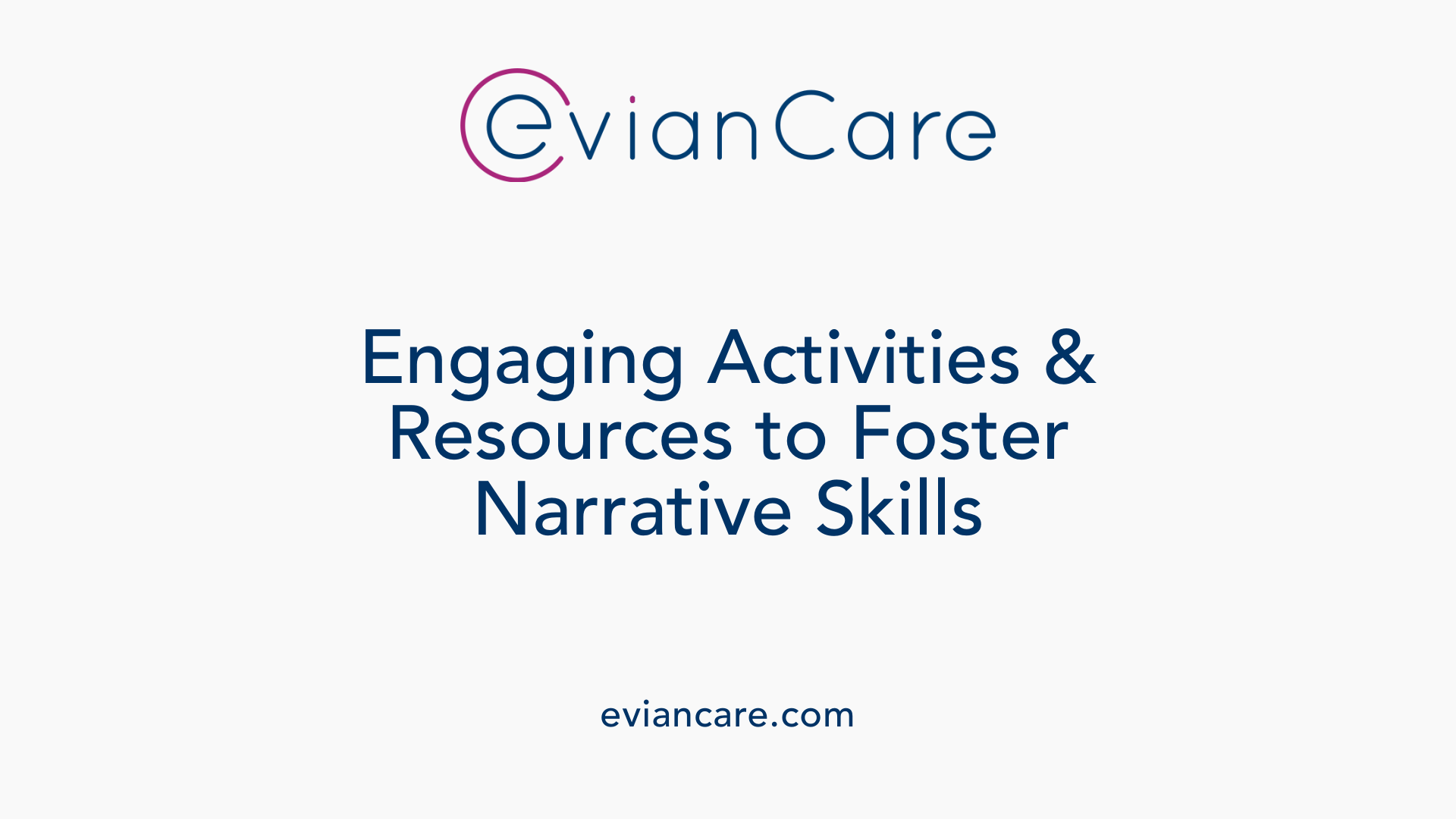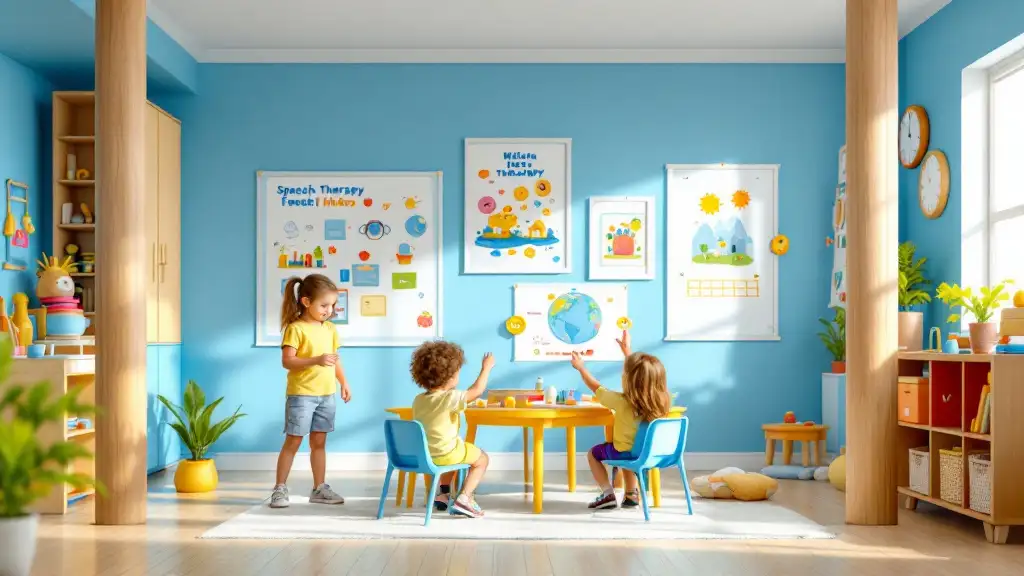
The Critical Role of Storytelling in Speech Therapy
Story retelling is a fundamental component of speech and language development, especially for children with developmental language disorders. Speech therapy programs that focus on improving narrative skills utilize a variety of strategies and activities rooted in comprehensive research. This article explores the significance of story retelling, developmental milestones, effective intervention techniques, and assessment methods in the pursuit of fostering robust narrative competence in children.
The Foundation of Narrative Interventions in Speech Therapy

What are narrative interventions in speech therapy?
Narrative interventions are structured activities where children are encouraged to tell or retell stories, focusing on specific language features targeted by the clinician. These interventions are designed to help children understand and use the components of stories, such as characters, settings, events, and outcomes. The goal is to improve their ability to organize ideas logically and express themselves clearly.
Through narrative work, children practice constructing and recounting stories in ways that strengthen their overall language skills. Clinicians may use various tools, including story retell cards, graphic organizers, and digital storytelling platforms like Google Slides, to support this learning process. Regular engagement in these activities promotes better narrative skills, which are fundamental for effective communication, literacy, and social interaction.
What specific language features are targeted?
Clinicians use narrative interventions to focus on several language features:
- Story grammar: Elements like initiating events, attempts, consequences, characters, and settings.
- Complex language: Incorporating conjunctions, varying sentence structures, and extending narrative length.
- Vocabulary: Expanding word knowledge related to story content.
- Inferencing: Understanding implied information and underlying themes.
- Social pragmatics: Using stories to learn conversational skills, such as starting and maintaining conversations.
These features are essential for children’s academic success and social competence.
How does narrative intervention aid in developing complex language and social pragmatics?
Narrative intervention helps children build complex language skills by encouraging detailed and organized storytelling. As children practice retelling, they learn to use richer vocabulary, advanced sentence structures, and logical sequencing.
Furthermore, telling stories enhances pragmatic language skills like taking turns, staying on topic, and understanding others' perspectives. Children become more confident in initiating conversations and engaging with peers, which fosters social skills.
Research over decades supports these approaches with large effect sizes for improving language in children with and without language disorders.
| Aspect | Focus | Tools/Activities | Benefits |
|---|---|---|---|
| Story Grammar | Building core story components | Story retell cards, graphic organizers | Enhances understanding of story structure |
| Language Complexity | Using multi-word sentences, varied vocabulary | Themed story activities, structured prompts | Improves syntactic skills and expressive language |
| Inferencing & Pragmatics | Making inferences, social use of stories | Role play, peer storytelling | Boosts social communication and comprehension |
| Generalization | Applying skills across contexts | Multiple exemplars, digital storytelling | Reinforces learning and adaptability |
By actively participating in storytelling exercises and receiving immediate, specific feedback, children develop stronger narrative abilities, which translate into better overall language competence.
Strategies and Techniques for Effective Intervention
What techniques and strategies can be used to improve story retelling skills through speech therapy?
Enhancing a child's story retelling abilities involves a combination of visual, verbal, and interactive strategies. Visual supports such as story maps, graphic organizers, pictography, and icons are essential tools that help children organize story elements like characters, settings, and events. These tools make abstract story concepts concrete, forming a visual framework that aids memory and comprehension.
Activities like sequencing exercises and story storytelling serve to reinforce understanding of story structure. Children practice ordering events logically, which improves their narrative flow and coherence. Using story starters and story mapping encourages creativity while emphasizing critical components such as the setting, characters, and plot.
Explicit teaching of story grammar—such as initiating events, attempts, and outcomes—paired with modeling and guided practice, helps solidify understanding of story structure. Immediate and specific corrective feedback during retelling activities supports learning by clarifying misunderstandings and reinforcing correct responses.
Incorporating engaging activities like peer story sharing, digital storytelling, and art projects makes the learning process enjoyable and motivating. These methods target not only language and narrative skills but also pragmatic and social communication abilities.
Overall, combining visual aids, structured activities, explicit instruction, and feedback creates a comprehensive approach to developing story retelling skills in children with diverse needs.
Assessment and Measurement of Progress

What methods exist for measuring progress and setting IEP goals for story retelling skills?
To effectively evaluate a child's development in story retelling, clinicians and educators utilize a variety of measurement tools. Standardized assessments and checklists are commonly employed to quantify specific storytelling abilities, such as the correct sequencing of story elements, use of appropriate vocabulary, and inclusion of key story components like characters, setting, and plot.
In addition to these formal tools, collecting retell samples over time provides valuable qualitative insights. Analyzing these samples helps track improvements in narrative organization, the richness of detail, and comprehension. Visual supports such as graphic organizers, story maps, and visual cues like icons or pictography are integral to monitoring progress. They make abstract concepts concrete and assist students in recalling story components more accurately.
Explicit modeling and repeated retelling activities foster skill generalization and stability. Using retell templates and rubrics offers structured frameworks for practicing and assessing storytelling. These tools help children focus on essential story features, ensuring reinforcement of correct structure and language use.
Setting IEP goals is streamlined by focusing on specific, measurable objectives. Goals may include retelling stories with a clear beginning, middle, and end, incorporating story elements and transition words, and increasing coherence in storytelling. Progress toward these goals is validated through rubric-based assessments, which evaluate retell quality systematically, and through qualitative analysis of retell samples which reveal growth in vocabulary, story complexity, and narrative cohesion.
Overall, combining formal assessments, sample analysis, visual supports, and structured activities creates a comprehensive framework for tracking a child's narrative development. These methods not only facilitate precise goal setting but also guide targeted intervention strategies to boost language skills.
| Measurement Tool | Application | Advantage |
|---|---|---|
| Standardized assessments | Quantify specific storytelling skills | Provide benchmarking and comparability |
| Retell samples | Track individual progress over time | Qualitative insights into narrative growth |
| Visual supports | Aide in comprehension and recall | Make abstract concepts concrete |
| Rubrics and checklists | Structured evaluation of storytelling components | Ensure consistency and objectivity |
| IEP goal setting | Define clear, measurable aims for narrative skills | Focused progress tracking and targeted instruction |
By blending these assessment measures with strategic interventions, clinicians can effectively monitor and foster a child's story retelling abilities, paving the way for improved communication and academic skills.
Activities and Resources for Narrative Development

What activities and resources can be used to enhance story grammar and narrative development?
To effectively develop children's storytelling abilities, clinicians utilize a variety of engaging activities and resources. Mentor texts are a fundamental component, serving as model stories that highlight narrative elements. Examples include books like "Ralph Tells a Story," "Jabari Jumps," and "My Dog Mouse," which help children recognize key components such as characters, setting, problem, and resolution.
Visual aids are also vital. These include story sequencing cards, graphic organizers like story maps, and pictorial cues, which help children grasp story structure. Using visual supports fosters clearer understanding and creates concrete anchors for abstract language concepts.
Story sequencing activities allow children to organize events logically, promoting comprehension and logical thinking. Story mapping exercises encourage them to pinpoint and describe essential story elements, strengthening their ability to structure narratives.
Teaching the 5Ws—Who, What, Where, When, Why—and How provides foundational questions that guide children in building complete stories. This framework assists in deepening their understanding of story content and organization.
Guided writing sessions and shared strategies reinforce these skills. Using templates like story spines or fill-in-the-blank stories supports children in organizing their ideas and developing confidence in storytelling.
A range of materials, including storybooks, visual cues, digital storytelling tools, prompts, and props, are employed to inspire creativity and foster spontaneous narrative production. These resources make the process engaging and adaptable to different learners’ needs.
Together, these activities and tools create a rich environment for enhancing story grammar, promoting both comprehension and expressive storytelling skills in children with diverse language learning profiles.
Educational Impact and Benefits of Narrative Skills

How can education on story structure, sequence, and comprehension improve retelling skills?
Teaching children about story elements such as structure, sequence, and comprehension has a profound effect on their ability to retell stories accurately and confidently. By understanding the core components—like the setting, characters, initiating event, attempts, and consequences—children learn to organize their thoughts systematically.
Visual aids such as story maps, graphic organizers, and storyboards serve as powerful tools. These resources enable children to visually reconstruct the story’s flow, making it easier to recall and piece together main ideas. For example, story element cards focusing on who, where, and what happen help emphasize key details.
Engaging strategies like the five-finger retelling technique encourage children to remember and communicate essential story parts effectively. Similarly, the SWBST (Somebody, Want, But, So, Then) framework guides children to summarize story elements in a structured manner.
Incorporating these tools into instruction promotes active participation, especially in small group settings. Children with language or memory challenges benefit from repeated exposure and support, gradually building confidence in their ability to retell stories coherently.
Overall, targeted education on story structure and sequencing enhances reading comprehension and oral storytelling skills. It equips children with the competence to understand, summarize, and communicate stories effectively, laying a strong foundation for literacy and verbal expression.
Final Thoughts on Fostering Narrative Skills in Speech Therapy
Achieving proficiency in story retelling is a multifaceted goal that benefits from evidence-based strategies, engaging activities, and tailored interventions. Speech therapists play a vital role in guiding children through structured practice that emphasizes understanding and using story structure, sequencing, and story grammar elements. Utilizing visual aids, immediate feedback, and collaborative activities enhances skill acquisition and generalization. Regular assessment and progress tracking through standardized tools and qualitative analysis ensure that goals align with developmental milestones and individual needs. Ultimately, developing strong narrative skills not only improves communication but also bolsters literacy, social interactions, and academic success, making story retelling a cornerstone of effective speech therapy interventions.
References
- Narrative Intervention: Principles to Practice
- Story Grammar Activities to Improve Narrative Skills in ...
- Story Retell Practice For Speech Therapy
- 10 Effective Narrative Language Activities
- Narrative Intervention: Principles to Practice
- Narrative Ability of Children With Speech Sound Disorders ...
- Retelling: An evidence-based literacy strategy












